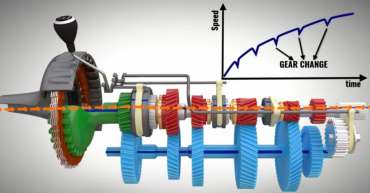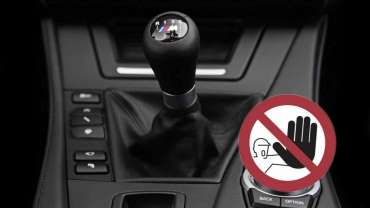Displaying items by tag: Manual transmission
Manual vs automatic transmission
Although the automatic transmission has not been so popular in our region in recent years, its popularity is slowly growing. However, have you ever wondered how it works? What is the difference between a manual and an automatic transmission?
The main question that arises is why is a gearbox needed at all? Primarily due to the increase in engine efficiency. If the engine transmitted its power directly to the wheels of the vehicle, its efficiency would be significantly lower. Interesting information is how the engine crankshaft, in some cases, turns as many as four times during a time in which the wheel turns only once. Accordingly, at a speed of 140 km / h and 5,500 engine revolutions, the average size wheel turns only 1300 times.
The automatic transmission consists of the so-called. planetarium (gear). Planetary gears revolve around a "solar" gear, and are located on their carrier, which in practice is located on the axis of the aforementioned sun. Gears depend on stopped gears that can stop the brakes or engage the clutches back (the whole story is simplified). As a rule, the gearshift is done automatically by means of a centrifugal regulator which directs the oil in the gearbox, and it can also be done manually by means of the gear lever.
On the other hand, the manual transmission, which the vast majority of drivers are accustomed to, works on a completely different principle. As a rule, it consists of gears that rotate at a constant speed and gears of different sizes (do not rotate at a constant speed), which give different gear ratios. The gear ratio is defined by the gear ratio and depends on the type of car. For example, in some cars, depending on the gear, it can be 2.8: 1, 1.8: 1, 1: 1, etc.
For all who want to know more about the difference and the principle of operation of automatic or manual transmission, below is a video.
{vembed Y=auQgOtveQi0}
These five driving errors are ruined by the manual transmission! (VIDEO)
These five basic mistakes are often repeated by less experienced drivers, and each of them significantly increases the wear of all parts of the manual transmission…
It is well known that students in driving schools gain too little knowledge about car mechanics, as well as about the wrong driving style that harms the car. Driving according to the regulations is not all that is needed to keep the car in good condition. That is why older and more experienced drivers often point out to young people errors that do not affect driving safety, but greatly reduce the durability of the car's mechanical components.
The vast majority of them come down to improper handling of the manual transmission. Unlike an automatic, a manual transmission offers better control of the vehicle, but at the same time requires more attention when using it. Every experienced mechanic knows very well that clutch wear can be increased several times by careless driving.
1. Rest your right hand on the shift lever
2. Hold the clutch pedal depressed while waiting
3. Keeping the car uphill using the clutch, instead of the parking brake
4. Abrupt acceleration in high gear
5. Rest the left foot on the clutch pedal, instead of on the foot rest
{vembed Y=_cbZlhduYJY}












